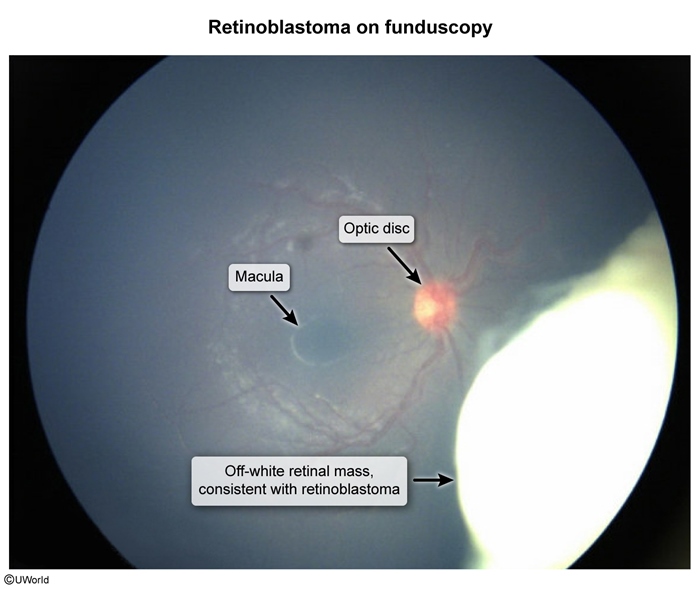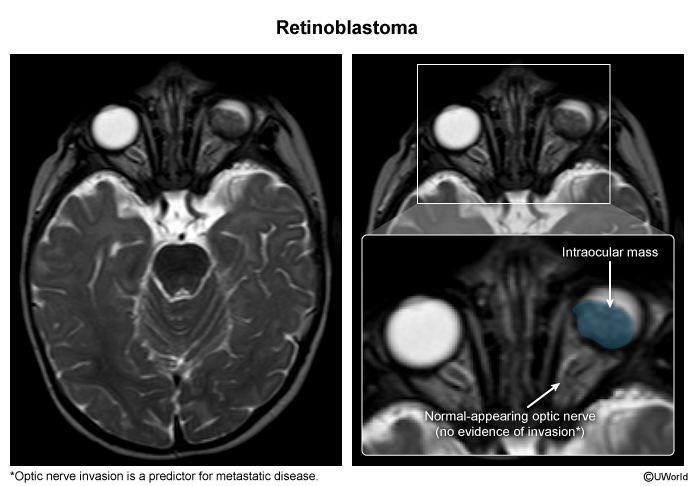Retinoblastoma
Article Sections
Introduction
Retinoblastoma is a rare but life-threatening malignancy of the retina that primarily affects young children. It is the most common ocular tumor of childhood and often presents with leukocoria in children age <5.
Pathophysiology
Retinoblastoma develops from genetic alterations disrupting the RB1 gene, which functions in cell cycle regulation. Checkpoints normally occur at the G1/S and G2/M transitions (Figure 1), allowing the cell cycle to pause for repair of damaged DNA. The RB1 tumor suppressor gene encodes the Rb protein, which regulates the G1/S checkpoint. In its active form, the Rb protein binds and inhibits E2F transcription factors, thereby halting the cell cycle. When the damaged DNA has been repaired, the Rb protein is inactivated by cyclin-dependent kinases, allowing the cell to proceed through the G1/S checkpoint.
Continue Learning with UWorld
Get the full Retinoblastoma article plus rich visuals, real-world cases, and in-depth insights from medical experts, all available through the UWorld Medical Library.
Figures
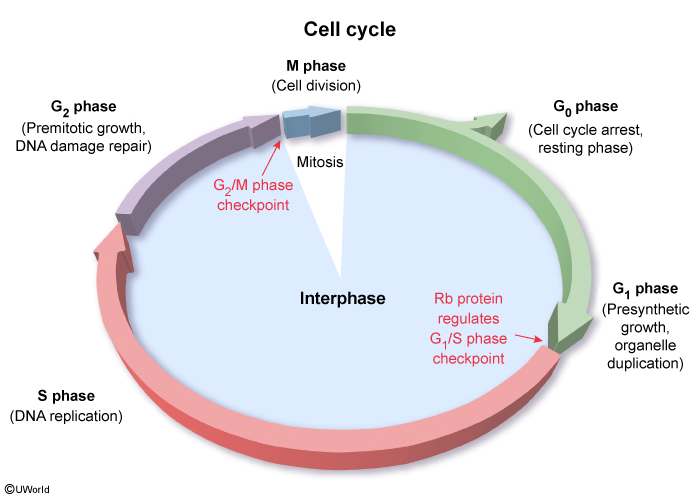
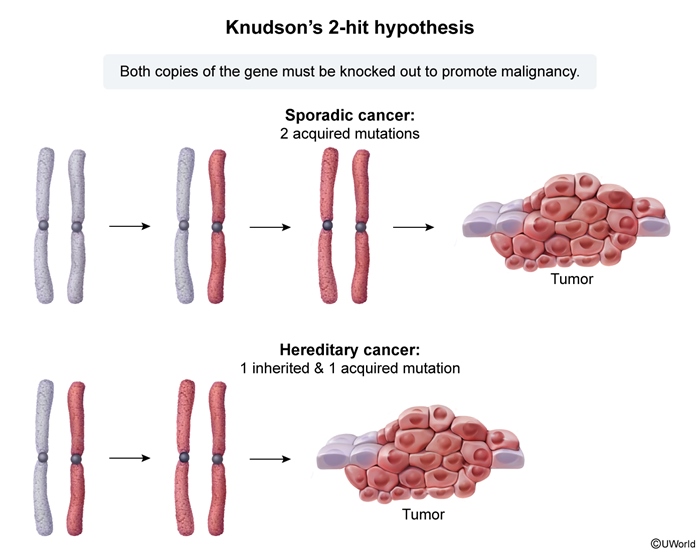
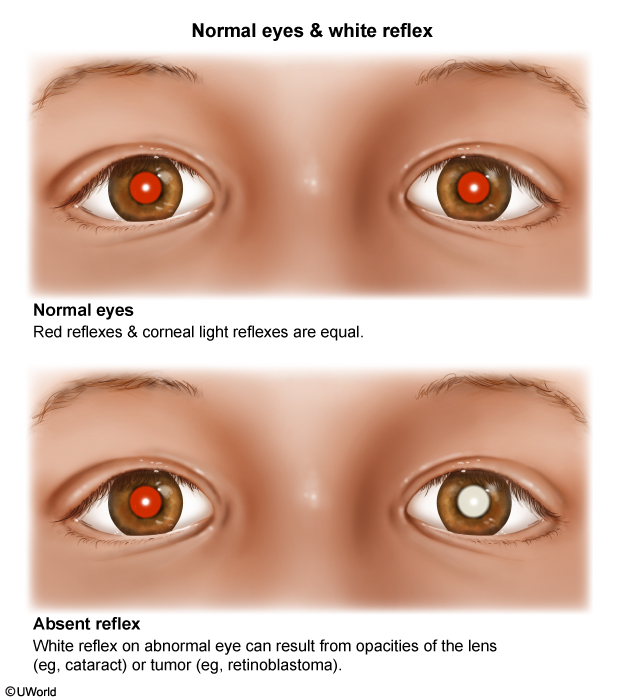
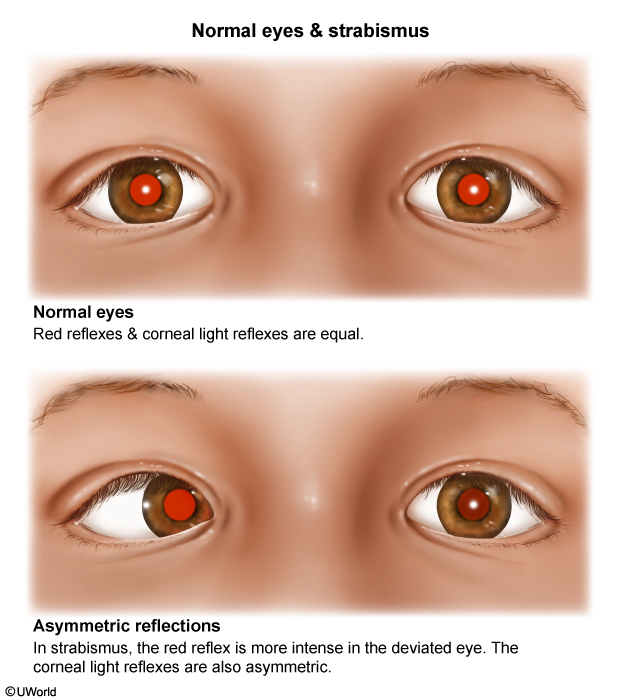
Images
